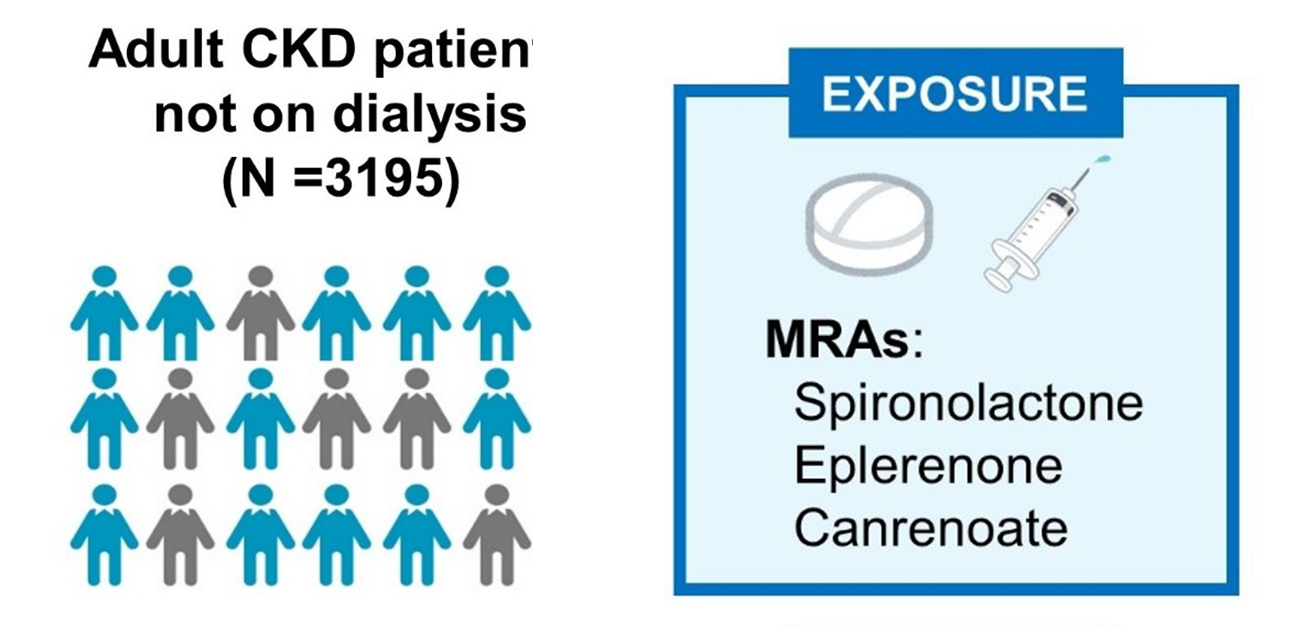
Improving prognosis in chronic kidney disease
Researchers from Osaka University identify an association between mineralocorticoid receptor antagonist use and improved renal outcomes in patients with chronic kidney disease
Just as a water filtration system acts to filter contaminants from the water you drink, your kidneys act to filter waste and excess fluid from your blood. In chronic kidney disease (CKD), kidney function is impaired over time, and the resultant build-up of excess fluid and waste has harmful repercussions on overall body function. Researchers in Japan conducted a study of real-world data from patients with CKD to evaluate the impact of a commonly prescribed medication on disease outcome.
In a study published in Hypertension, researchers from Osaka University have demonstrated an association between the use of mineralocorticoid receptor antagonists (MRAs), a class of medicines that acts by suppressing the action of the steroid hormone aldosterone, and an improved renal prognosis in individuals with CKD.
As CKD progresses, the initiation of renal replacement therapy (RRT), which includes dialysis and kidney transplantation, may be necessary for life support in kidney failure. MRAs, which include spironolactone, eplerenone, and potassium canrenoate, are commonly used to reduce swelling, blood pressure, and urine protein levels in people with CKD. However, the association between MRA treatment and the initiation of RRT has not been fully explored in a real-world population, which spurred the research team from Osaka University to undertake a large-scale retrospective study of MRA use in people with CKD.
“We conducted a retrospective analysis of clinical data from over 3100 individuals with CKD,” says lead author Tatsufumi Oka. “We evaluated MRA treatment in various populations of people with CKD, including those with diabetes, heart disease, and severely impaired renal function.”
The research team employed a marginal structural model to analyze the association between MRA use and the initiation of RRT across multiple patient subgroups.
“Our analysis showed that MRA use was associated with a 28% lower rate of RRT initiation and a 24% lower rate of the combined outcomes of RRT initiation and death,” says senior author Jun-Ya Kaimori.
The research team observed a reduced risk for RRT initiation across various subgroups of people with CKD, including those with and without diabetes and those with severely impaired renal function. These findings highlight the association of MRA use and improved renal outcomes in a real-world population of CKD patients with varying health backgrounds. Overall, this study supports the use of MRAs in treatment plans for various groups of people with CKD who are not undergoing dialysis.

Figure 1. Overview of the present study.
(credit: Tatsufumi Oka et al.)

Figure 2. Marginal structural model.
(credit: Tatsufumi Oka et al.)
The article, “Mineralocorticoid receptor antagonist use and hard renal outcomes in real-world patients with chronic kidney disease,” was published in Hypertension at DOI: https://doi.org/10.1161/HYPERTENSIONAHA.121.18360.
Related Links
Kaimori Junya (Researcher Directory)
EurekAlert!
